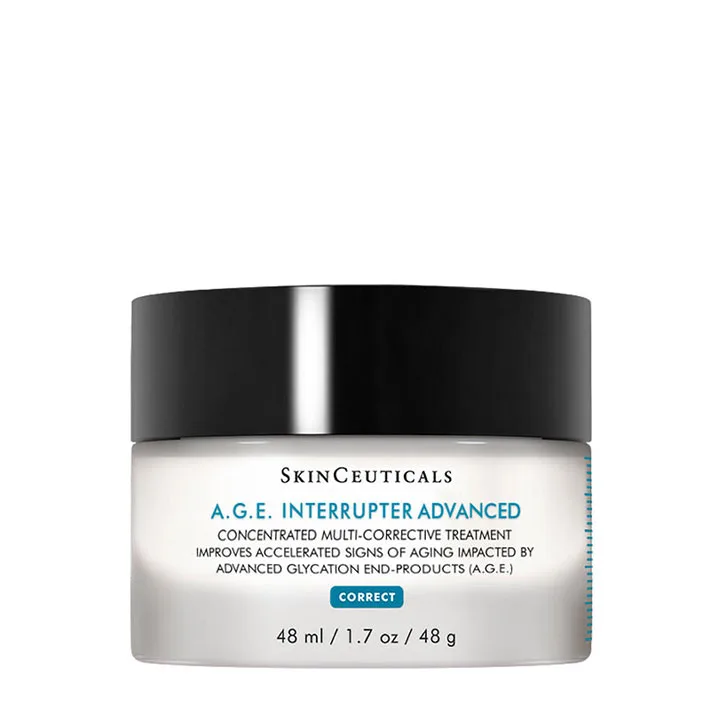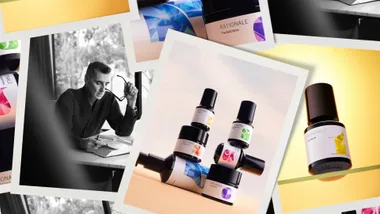As the body’s largest organ, it’s safe to say that your skin has a lot going on.
While it serves a purpose for the entire body, the skin on your face plays a crucial role in regulating body temperature, preventing water loss and helping to sense touch, temperature and pain.
It’s also an essential part of how we communicate, helping us form facial expressions, all while giving us a unique sense of identity.
As one of the most sensitive parts of the body, the skin on our face is more susceptible to damage. It’s also the place where the first signs of ageing are the most noticeable.
While completely natural and normal, there’s one process that can have a profound effect on the health and appearance of our skin: glycation.
marie claire Beauty Director Sally Hunwick caught up with Cosmetic Doctor Dr Niki Talic and Dr Tania Romano, Education & Scientific Communications Manager at SkinCeuticals to find out all about it—and how to manage the damage.
Watch our Q&A with the skin experts in the video above.
What Is Glycation?
“Glycation is a natural process that happens in our bodies, where sugars, like glucose and fructose, bind to proteins,” Dr Niki Talic tells marie claire Australia.
A natural physiological process, glycation can also be exacerbated by external factors like UV exposure, smoking and consuming a diet that is high in overly processed and sugary foods.
“They form a number of unstable bases, and the end product that you end up with is called advanced glycation end product, or A.G.E.,” says Dr Talic.
These A.G.E.s “target the skin on multiple different levels” and affect the quality of collagen and elastin in our skin.
“Collagen is really important for formation of fine lines and wrinkles [and] the role of elastin is to give you that bounce back on your skin, so it makes us feel plump and gives you that hydrated look. The loss of collagen and elastin can cause that kind of ‘saggy’ appearance in your skin and can, overall, give you a dehydrated appearance.”
Why Am I Only Just Hearing The Term ‘Glycation’ Now?
Part of our normal bodily functions, the term glycation has existed for a long time in the medical community, but it has only recently made its way into the skincare lexicon.
That’s because innovations in science and technology mean new products have been formulated to tackle the effects of glycation, making it a bit of a new beauty buzzword.
“It is really hard to develop a product that targets glycation, because it is such an intrinsic process,” says Dr Romano.
“But we have developed some newer technologies at SkinCeuticals to be able to develop a topical cream that does help fight those negative effects of the A.G.E.s.”

SkinCeuticals A.G.E. Interrupter Advanced goes beyond the role of traditional anti-ageing products by not only protecting against collagen glycation at every stage, but also optimising collagen integrity.
“It helps stop those negative effects of the A.G.E.s and gives your skin plumper collagen and a better overall look and feel to help fight those visible signs of ageing,” says Dr Romano.
Plus, it’s full of innovative ingredients, like pomegranate extract to fight glycation caused by UV and blueberry extract to tackle the internal glycation process.
“One of the other biggest key ingredients in this formulation is something called Proxylane,” says Dr Romano.
“Proxylane is a molecule that actually stimulates the fibroblast cells that live deep within the dermis of your skin to actually produce new collagen in your skin and produce more hyaluronic acid.
“What you’re doing is improving and protecting the collagen in your skin, but you’re also producing hyaluronic acid that’s going to help make your skin plump by holding onto water.
“All of these ingredients in this new product help to fight those effects of glycation and give your skin the best health.”
For more tips on how to tackle the effects of glycation (and how to use anti-glycation products as part of your everyday skincare routine), watch the video above.
Brought to you by SkinCeuticals.










